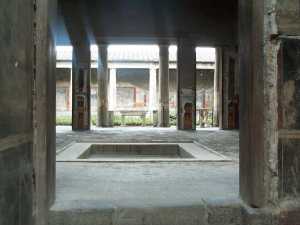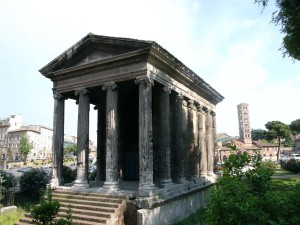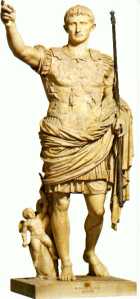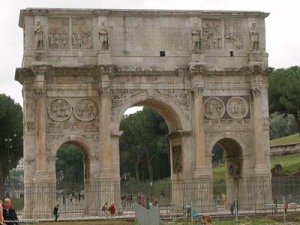Temple of Portunus
*Roman architecture
*The Romans architecture came from the base of Greek architecture but had two main differences: First, they took the columns and engaged them into the wall surfaces of the building. Second, the structure engages you to walk around the whole building but the interior is what you want to see and there’s only one entrance into the building.
Augustus of Primaporta
*marble
*Roman sculpture
*During the Romans time, Mount Vesuvius erupted and ended up destroying important historical cities in Rome such as Pompeii. There was a complete culture and way of living left in rubble.
The Romans had a very distinct structure to their homes
 Atrium – a pool underneath an opening in the ceiling that was the main water source int he house.
Atrium – a pool underneath an opening in the ceiling that was the main water source int he house.
Rooms were located off to the sides and there was a garden located in the back that could visibly be seen from the front entrance.
Elements of Roman Architecture
 Barrel vault: same manner as the round vault but continuous
Barrel vault: same manner as the round vault but continuous
Groin vault: when four barrel vaults come together and form a crossing.
Dome: a circular ceiling that is anchored on a 180 degree rotation
Flavian Theatre (Colosseum)
Roman Ampitheatre
Started under Vespasian and completed under Titus
The floor was covered in sand and was the base for athletic events, blood sports, animal hunts, fights to the death between gladiators or man vs. animal, also mock sea battles in which the arena would be flooded.
The Pantheon
*Roman architecture
*This is an example of a dome
*A temple to the Olympian Gods
The Arch of Constantine
*Roman Architecture *315 CE *3 barrel vault passagway


















 90-2130 BCE (4
90-2130 BCE (4














